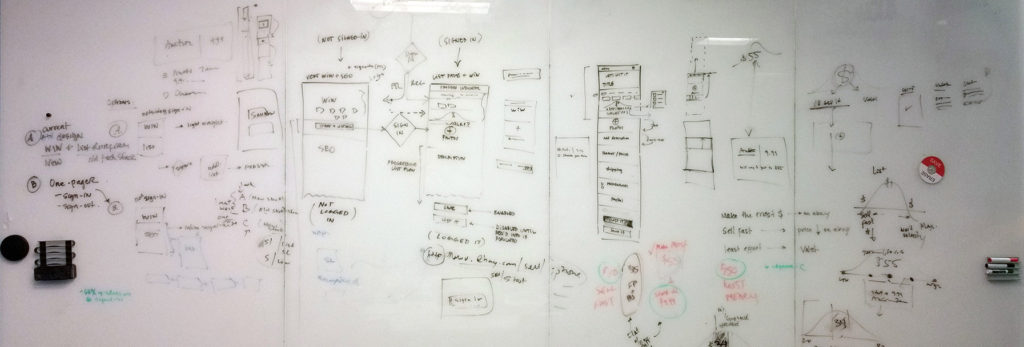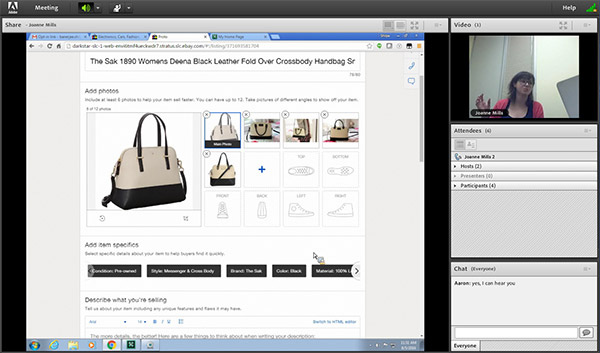
eBay Consumer Selling
Bolt E2E Journey
UX Lead


For the first time in eBay history, the consumer selling experience was re-imagined holistically with an end-to-end approach. 2016 and 2017 proved to be big years for consumer selling. With C2C coming in as the #2 companywide initiative, our team received a ton of visibility, funding, and resources to drive the selling experience forward. Project Bolt is the primary listing experience for C2C and evolved in 3 major phases. At the end of 2016 we rolled a slow-ramp of our V1 product to the US market. Throughout 2017 we focused on increasing completion and conversion metrics, geo-expansion to our top markets, and rolling our learnings into our native apps.


Our project goals were ambitious
Unlike our legacy listing flow, Gandalf, the initial goal of the new end-to-end experience was to get sellers through the entire flow in less than 60 seconds. It needed to be fast – really fast, so we called it Bolt as homage to the world’s fastest man, Usain Bolt. The key to enhancing the selling experience was to simplify listing via structured data services, guidance, and simplicity – that’s what Bolt is all about.
The entire listing experience was re-examined from a holistic perspective across platforms. Listing an item needed to feel seamless all the way from the primary Pre-List entry-point via Sell Landing (or SEO), through browse (identifying the product or item in the eBay catalog), to the List form, and finally to Post-List, with improved revise and relist scenarios as well as offer tools and guidance.

UX Lead for E2E Web Experience
16 months, 3 designers, 6 product managers, 2 project resets, 1 north star vision

Our legacy C2C Selling tool (referred to as Gandalf in house) had been the primary listing flow for consumer sellers since 2013. Gandalf solved many issues of its predecessors, however after several years in the wild we determined a new simpler and faster approach to selling was needed to maintain our position as the worlds #1 consumer selling marketplace. Listing an item with the wizardry Gandalf took 18 minutes for the average user, the UI was too complex for First-Time Lister’s (FTLs), it was not SEO optimized, didn’t leverage the power of eBay’s data-driven services, and was cluttered with features that most users didn’t require. Completion and conversion rates were suffering across our major markets.

Research played a large role throughout the process. End-to-end user journeys and heuristic evaluations were performed to identify key areas of motivation, friction, metrics, dependencies, and inconsistencies.

The e2e experience provides a simple and fast track for listing, focused on the distinct needs of our primary customer segments: First-Time Listers (FTLs), Occasional Sellers, and Regular Sellers.
[Design Framework section below best viewed on desktop]





BOLT generated $1 billion in GMV in it’s first 9 months
Bolts key advantages
- Less Time to List: Data science plays a primary role in the speed of our new experience – allowing real-time recommendations and guidance via structured data services.
- Low Barrier for Entry: With the redesigned entry-points to selling via landing and the pre-list flow, items are identified and mapped to our product catalog. This allows the UI to provide real-time guidance and recommendations.
- Real-Time Guidance: More assistance throughout the listing flow with improved guidance around photos, details, descriptions, market-range, shipping services, and fees.
- Pricing and Shipping recommendations: We increased adoption of the most difficult areas by providing real-time data insights, helping sellers determine the best price and shipping method for their region.
- Smart Functionality: We’ve removed major completion blockers by mapping the experience to user segmentation, and introducing dynamic features that adapt to seller needs as they mature.
- Enhanced Photos UI: Drag-and-drop functionality, quick editing features, inline guidance, and the ability to upload directly to your desktop listing via your mobile device.
Throughout 2017 the team stress-tested the product. We focused heavily on driving the customer experience forward with a simplification and reductionist approach. Multiple trips overseas to our top markets allowed fine-tuning to distinct geos. Bi-weekly iterative research sessions were conducted throughout design and development to assure usability issues were addressed, in addition to internal testing and slow ramps based on completion and conversion metrics and customer feedback.



UX Project Lead
Design & E2E Strategy



